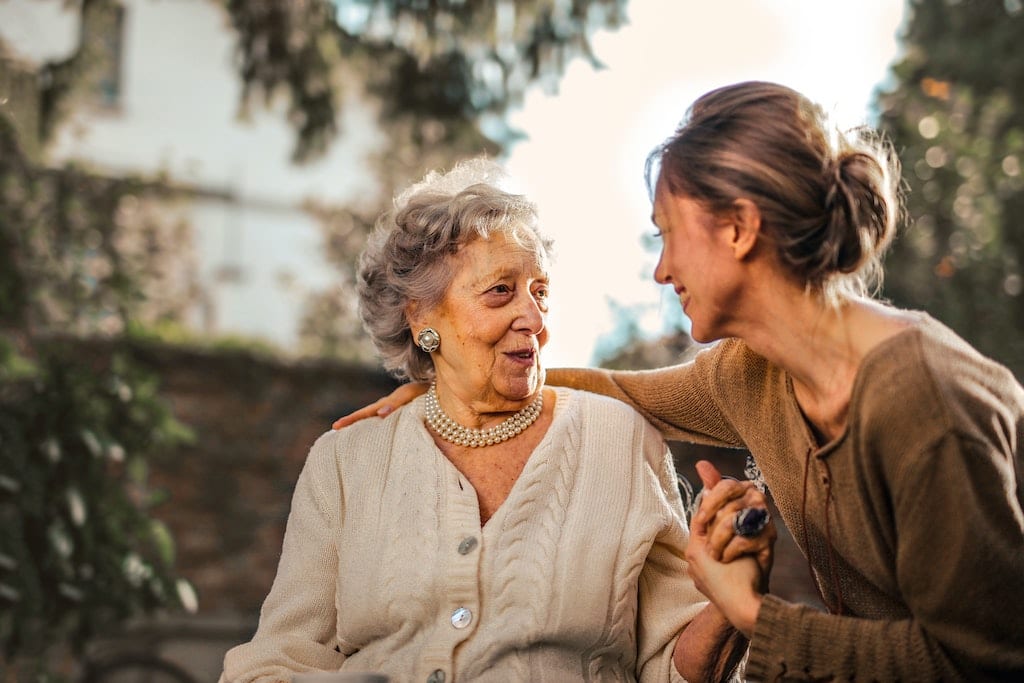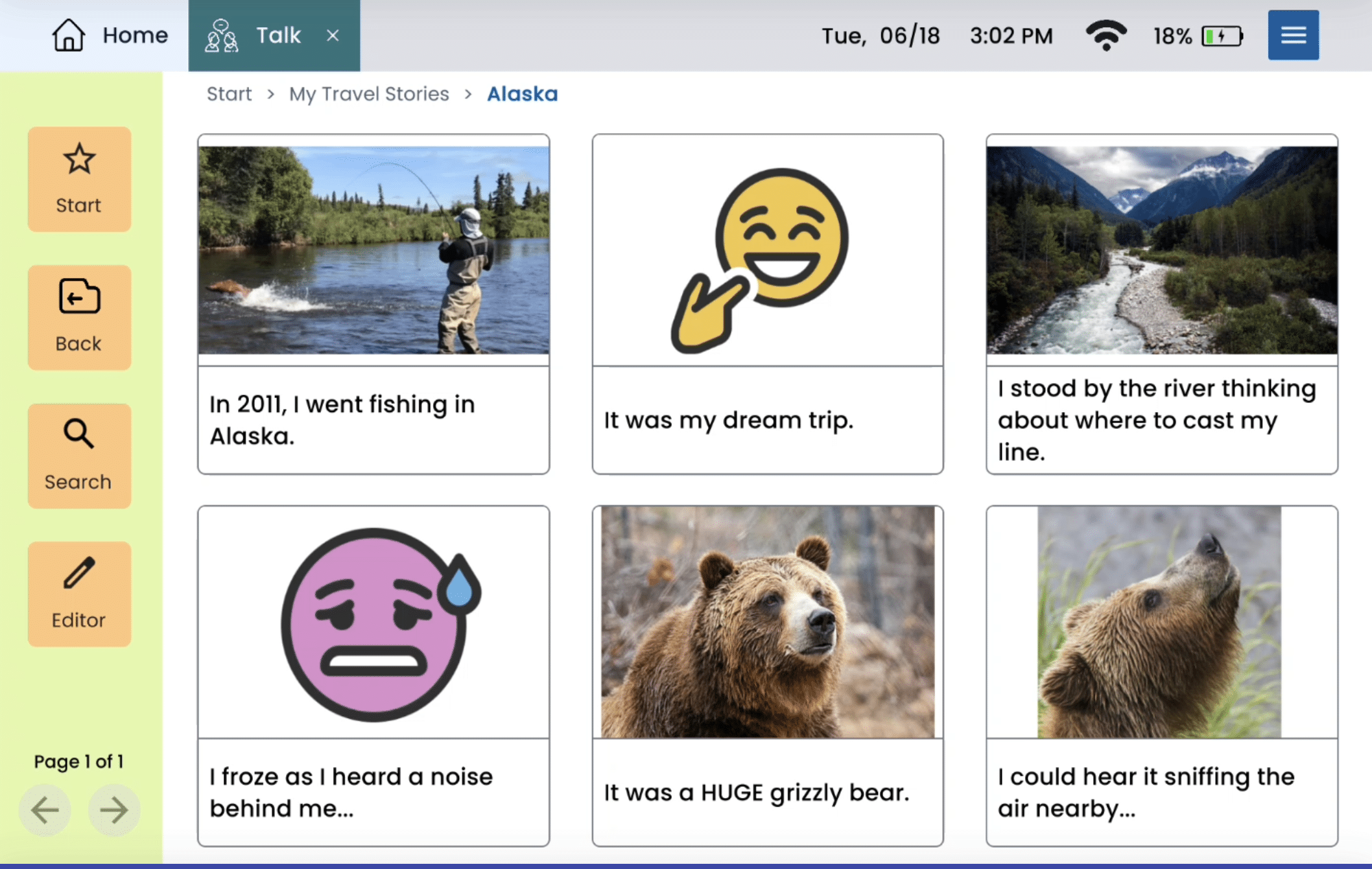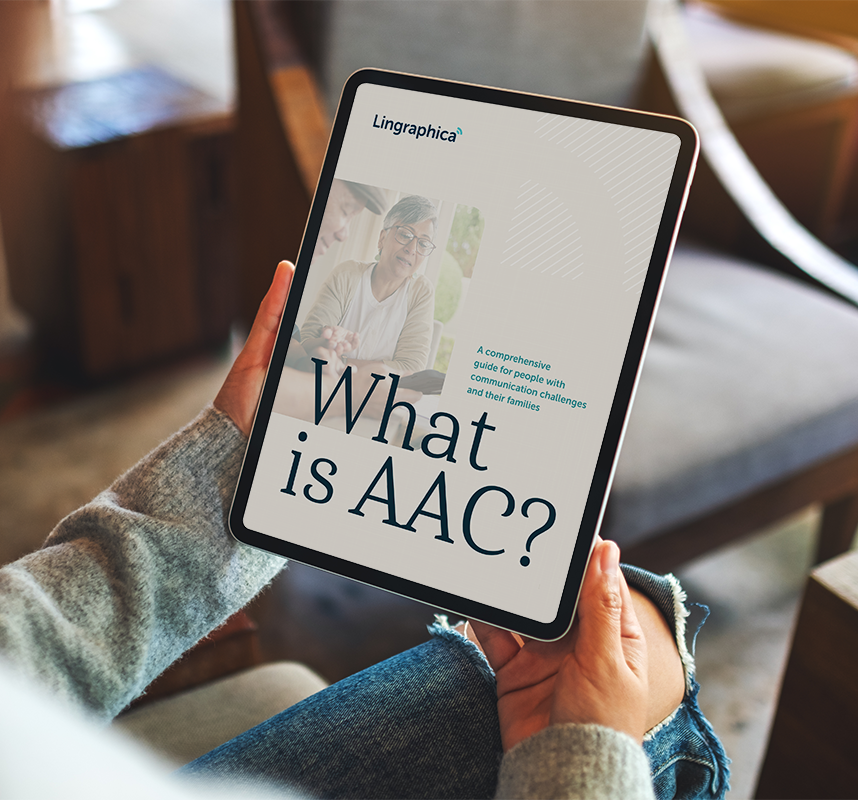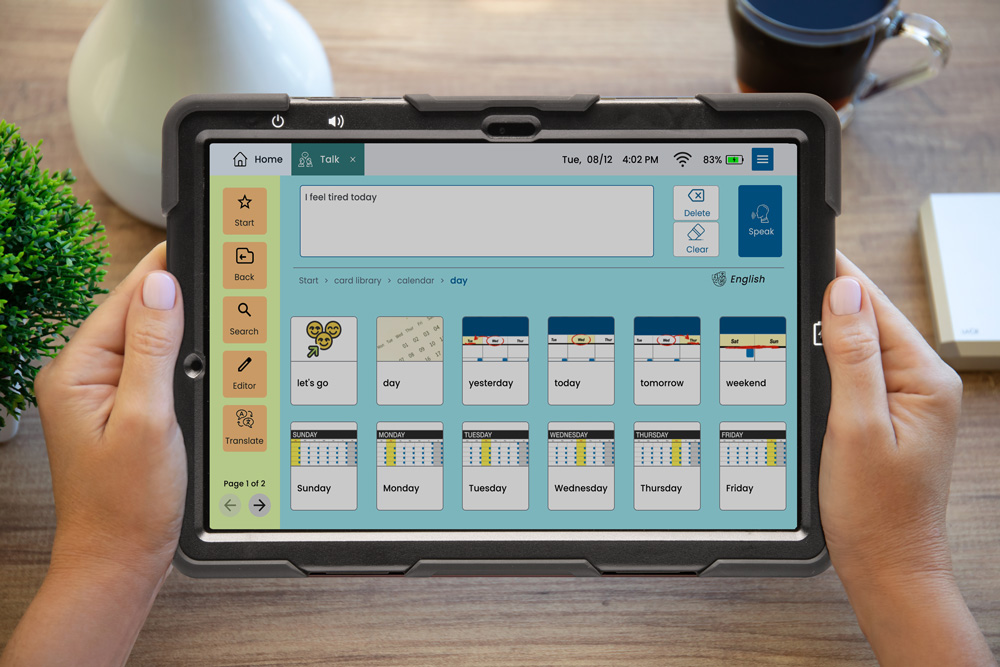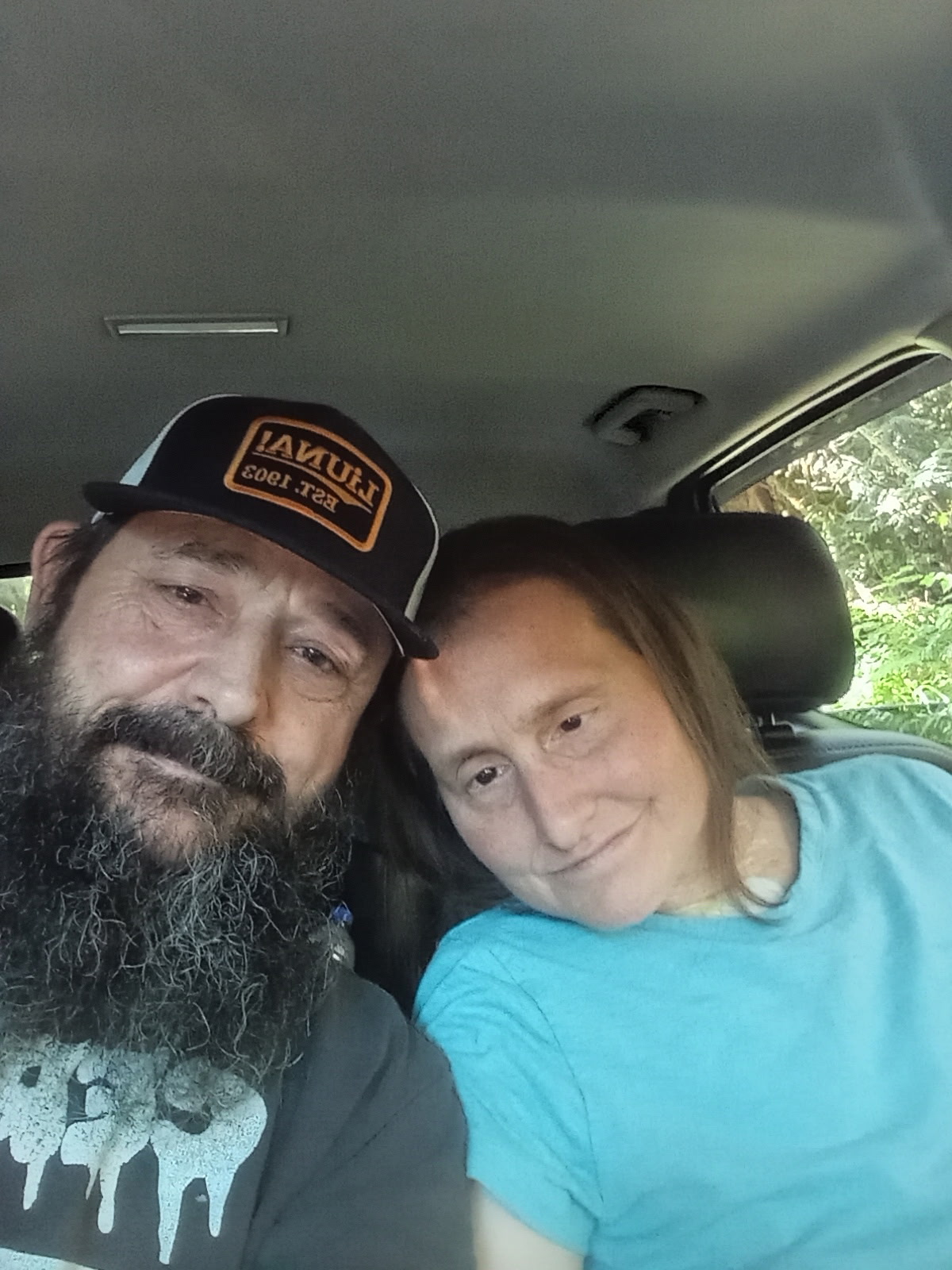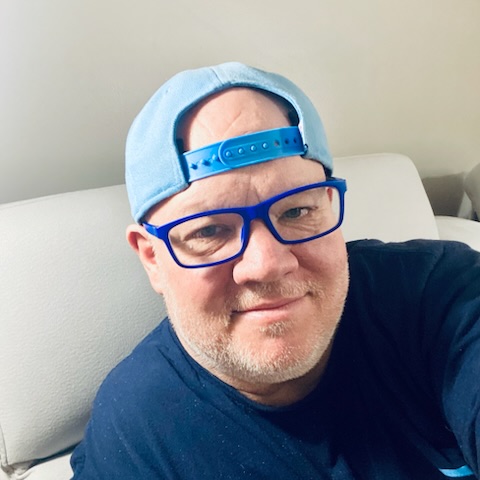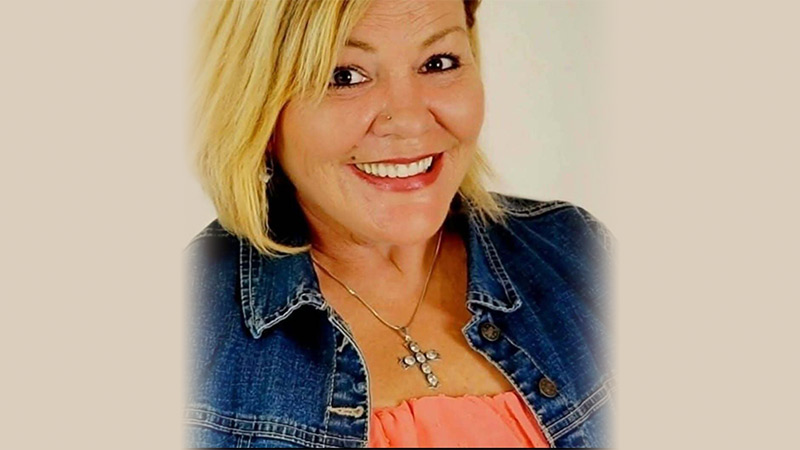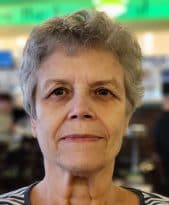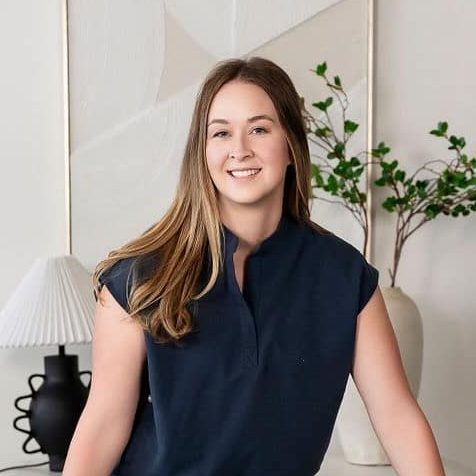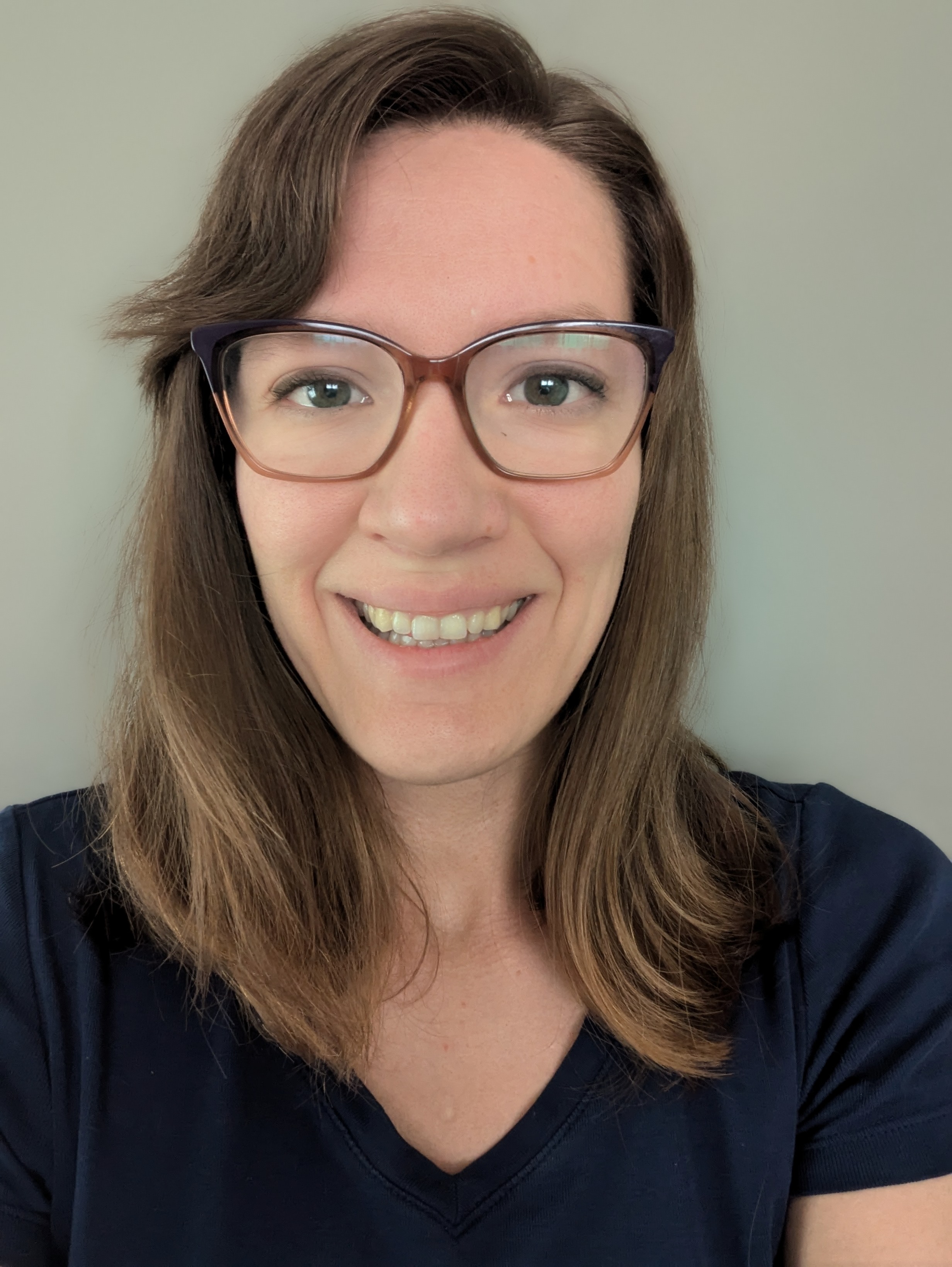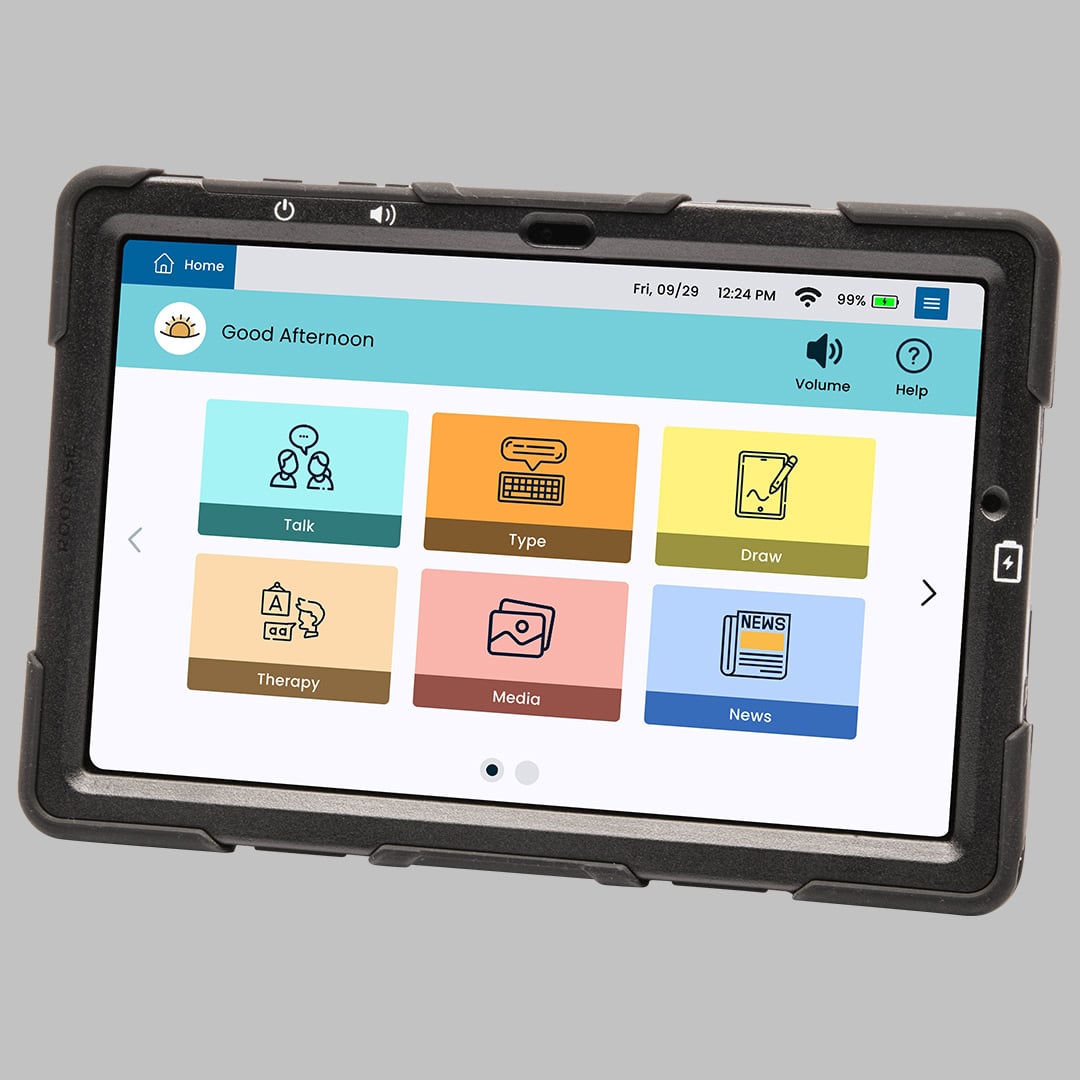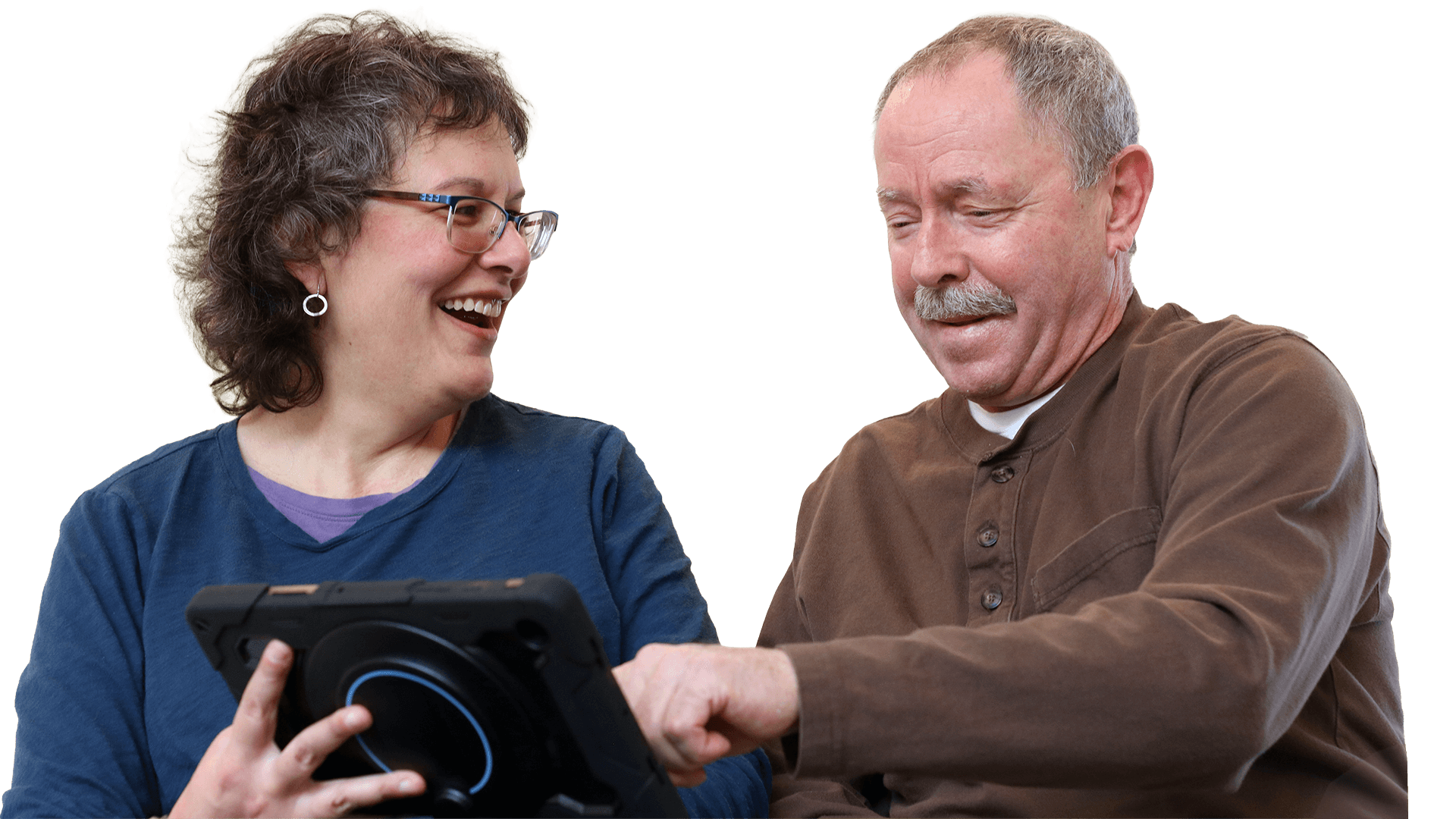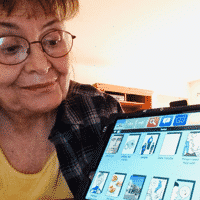
In July 2005, Michele Mazzoni, had a stroke at age 54. At that time, she worked as a certified nursing assistant at Morristown Memorial Hospital in New Jersey. She lived on her own, as her beloved husband had passed away the year before, and all four of her children were grown. She was diagnosed with aphasia and dysarthria, making it very difficult for her to communicate verbally. Michele received some speech therapy, and she began using a communication device in 2006 to help her interact with others and convey her needs.
Fast-forward to 2018. The communication device Michele had been using stopped working, but when she reached out to the company for a repair request, she was told it was too outdated for them to fix. As a fairly tech-savvy woman, now age 67, who was determined to find a new solution to help her communicate, Michele learned about Lingraphica’s communication devices through an internet search, and she made an inquiry about doing a free device trial.
Michele connected with Lingraphica’s Patient Navigator, Carmen Sapara. The two corresponded over email at length about Michele’s situation and desire to try a Lingraphica device. Despite her difficulty with speech, Michele is able to communicate with a keyboard very well. It wasn’t long before Carmen found a speech-language pathologist near Michele who could trial the Lingraphica MiniTalk™ with her.
A Strange Coincidence Uncovers a Link Between SLP and Client
In September 2018, Elizabeth O’Leary, a speech-language pathologist with Genesis Healthcare, paid her first of many visits to Michele’s home in Lake Hiawatha, NJ. They began to converse, with Michele typing the difficult parts of what she wanted to say on her iPad. When Michele learned that Elizabeth’s husband is British, she served Elizabeth tea from one of her various tea pots at each visit, even though Michele prefers coffee. As they shared warm drinks and cookies, the two women discovered that Elizabeth was a childhood friend of Michele’s daughter, Emily. Michele even recalled details about Elizabeth’s family.
“It was a strange and wonderful coincidence…the way we put this altogether,” said Elizabeth. “The fact that she remembered so much about my family was so amazing.”
That wasn’t the only amazing thing. Not only was the Lingraphica device new to Michele, but it was also the first time Elizabeth had been introduced to one. Elizabeth received device training from a clinical consultant at Lingraphica, and then Elizabeth went to work with Michele. After 10 weeks of therapy sessions using the MiniTalk, Elizabeth couldn’t believe how much Michele was able to do on her own.
“Michele became proficient on the MiniTalk,” said Elizabeth. “She persisted and practiced on her own, and she was able to acclimate herself to something completely new. By the end of our therapy in December, Michele was able to use the device to request gasoline, buy stamps, converse with the local butcher, and talk with her doctor and family. And she did most of this programming on her own.”
Michele Becomes Committed to Communicating Through Her Device
Michele now has her very own MiniTalk, which she calls “Nadine,” named after one of the voice options on the MiniTalk. She loves the small size of the device and takes it with her wherever she goes.
By the conclusion of their therapy sessions, Elizabeth and Michele were inspired by each other. Michele wrote a long and lovely poem to Elizabeth as a way of saying “thank you,” while Elizabeth felt honored to have worked with such a warm, loving person who is so committed to wanting to communicate again.
“Elizabeth often called me a “superstar,” Michele wrote in an email. “I will miss her visits so much…she is my superstar.”
With Michele well on her way to communication excellence on her MiniTalk, Elizabeth is about to begin her next Lingraphica device trial with a new client.
“I can’t say enough about Lingraphica—from support to training to resources—everything and everyone I had contact with was so great!”

